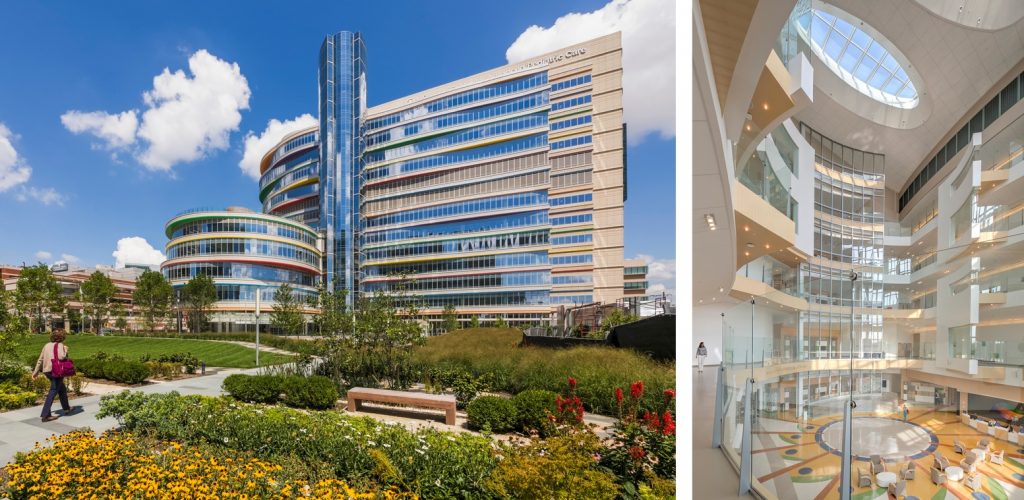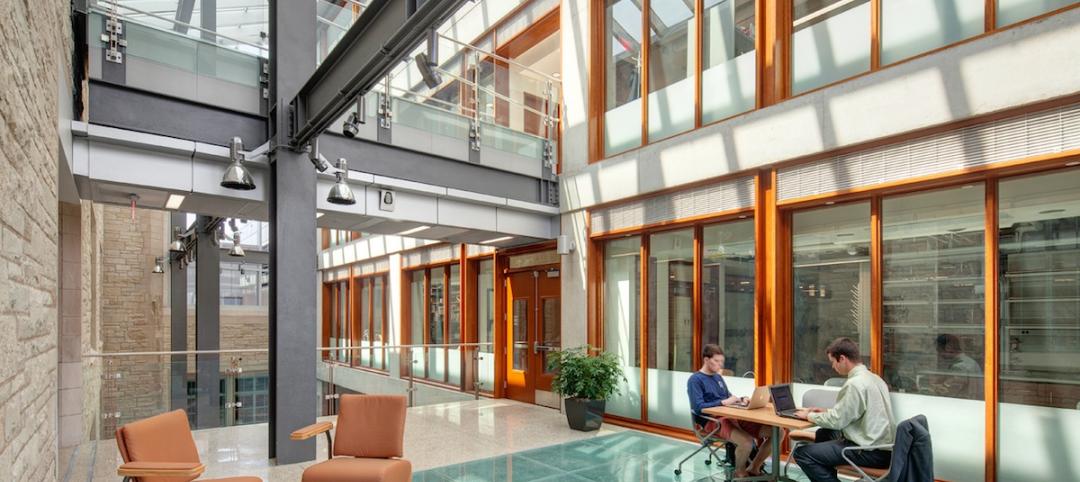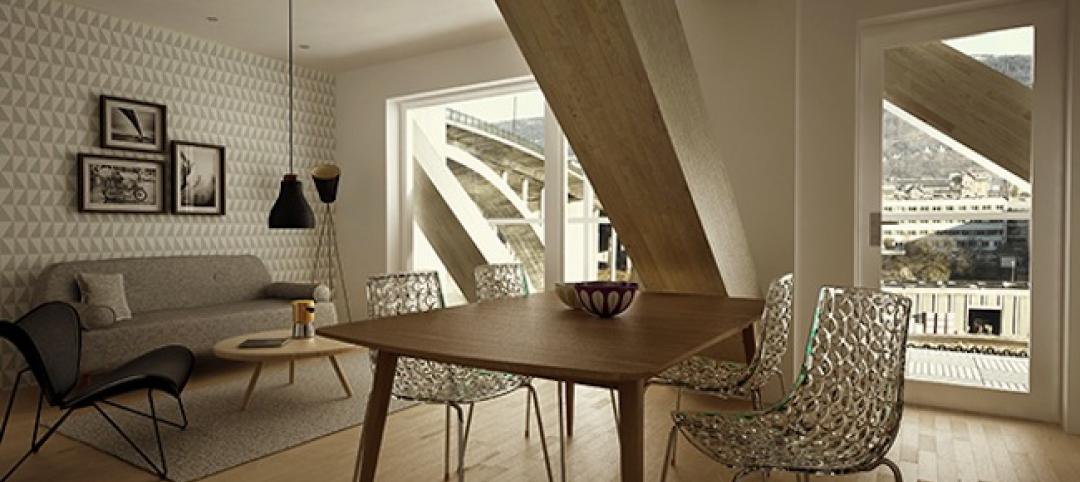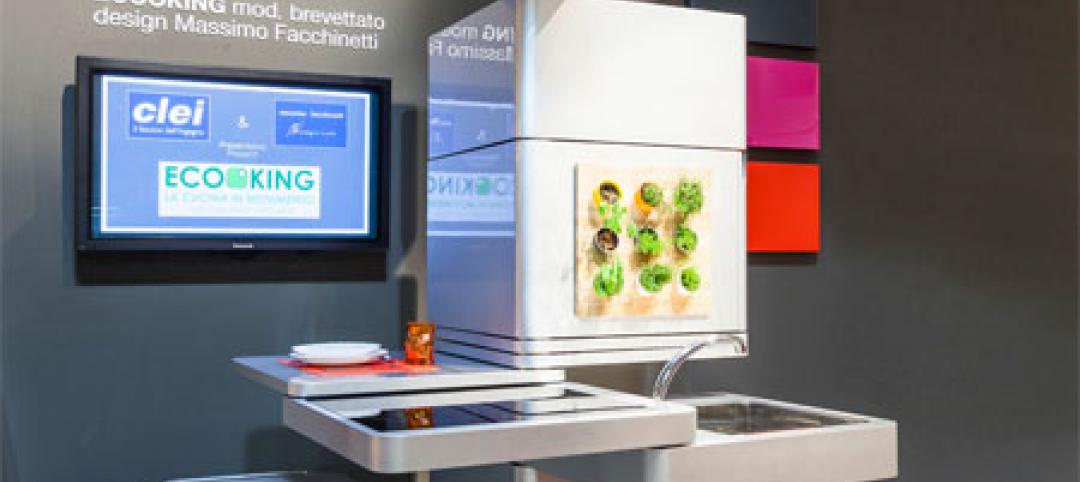In a deal announced this morning, Houston-based healthcare and S+T design specialist FKP has merged with design giant CannonDesign (#8 on BD+C’s Giants 300 Top 100 Architecture/Engineering Firms ranking). The merger forms a 19-office, 960-employee practice that produced more than $220 million in combined design revenue in 2016.
Led by CEO Diane R.K. Osan, FAIA, ACHA, FKP is an internationally recognized design firm with offices in Houston, Dallas, and Columbus. Known for its expertise in pediatric healthcare, the firm has designed children’s facilities throughout the U.S., including Nemours’ A.I. DuPont Hospital for Children in Wilmington, Del., the Children’s Hospital of Philadelphia’s Buerger Center for Advanced Pediatric Care in Philadelphia, and numerous projects for Texas Children’s Hospital.
“CannonDesign’s five-year strategic framework focuses on proactive strategies for strengthening our client partnerships through personal and firm growth by office expansions, new hires, and mergers,” said CannonDesign’s CEO Brad Lukanic, AIA, in a statement. “Today’s merger with FKP intentionally increases CannonDesign’s commitment to total health solutions with a focus on children’s health, while advancing our design impact, being a top-tier employer, and taking a stronghold in key geographic areas like Texas and Ohio.”
Reflecting on the shared benefits of the merger, Osan notes the opportunity to profoundly impact community health. “In order to effectively improve the conditions of our communities, we have to start by addressing the needs of children. Not just healthcare for children, but education, research, recreation, nutrition and that list goes on. All of these factors are critical in setting the path for a child’s future, and our firms’ combined expertise will allow us to address these factors and set children and communities up for success.”
Osan will assume the role as leader of CannonDesign’s Pediatric Health Practice. Looking beyond the traditional definition of healthcare, she will lead the practice in exploring ways to support the health and wellbeing of children across numerous environmental settings. She’ll also be joining the firm’s board of directors.
“Both of our firms have solid foundations,” added Lukanic. “Now we can expand in key areas to further serve our clients and create partnerships to evolve our design practice.”
Going forward, FKP will conduct business as FKP | CannonDesign.
Related Stories
| May 3, 2014
Health system capital planning for the future: The benefits of master plan portfolio analysis and ambulatory market modeling
Money continues to be scarce, yet U.S. health systems need to invest and re-invest in their physical future. Healthcare facilities planning experts from CBRE Healthcare outline tools and strategies for identifying where to best allocate precious resources.
| May 3, 2014
4 easy steps to being a great project manager
Managing a team of people, especially creative people, is a task that not everyone is up for. Keeping your team on the same page while maintaining a schedule and budget that can keep your corporation happy will take confidence and bountiful people skills. Here are some tips for effectively managing a project. SPONSORED CONTENT
Sponsored | | May 3, 2014
Fire-rated glass floor system captures light in science and engineering infill
In implementing Northwestern University’s Engineering Life Sciences infill design, Flad Architects faced the challenge of ensuring adequate, balanced light given the adjacent, existing building wings. To allow for light penetration from the fifth floor to the ground floor, the design team desired a large, central atrium. One potential setback with drawing light through the atrium was meeting fire and life safety codes.
| May 2, 2014
World's largest outdoor chandelier tops reworked streetscape for Cleveland's PlayhouseSquare
Streetscape project includes monumental gateway portals, LED signage, and a new plaza, fire pit, sidewalk café, and alfresco dining area.
| May 2, 2014
Norwegian modular project set to be world's tallest timber-frame apartment building [slideshow]
A 14-story luxury apartment block in central Bergen, Norway, will be the world's tallest timber-framed multifamily project, at 49 meters (160 feet).
| May 2, 2014
Top 10 countries for LEED buildings outside the U.S.
The list of the top 10 countries for LEED reflects the global adaptability of the world’s most widely used and recognized system guiding the design, construction, operations and maintenance of green buildings.
| May 1, 2014
First look: Cal State San Marcos's posh student union complex
The new 89,000-sf University Student Union at CSUSM features a massive, open-air amphitheater, student activity center with a game lounge, rooftop garden and patio, and ballroom space.
| May 1, 2014
Super BIM: 7 award-winning BIM/VDC-driven projects
Thom Mayne's Perot Museum of Nature and Science and Anaheim's new intermodal center are among the 2014 AIA TAP BIM Award winners.
| May 1, 2014
Tight on space for multifamily? Check out this modular kitchen tower
The Clei Ecooking kitchen, recently rolled out at Milan's Salone de Mobile furniture fair, squeezes multiple appliances into a tiny footprint.
| May 1, 2014
Chinese spec 'world's fastest' elevators for supertall project
Hitachi Elevator Co. will build and install 95 elevators—including two that the manufacturer labels as the "world's fastest"—for the Kohn Pedersen Fox-designed Guangzhou CTF Finance Center.

















